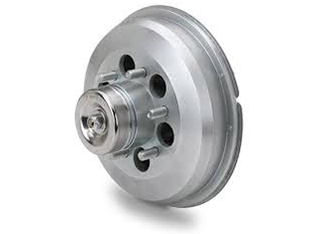Fan Blades Things To Know Before You Get This
Table of ContentsFan Blades - TruthsThe Best Guide To Fan BladesSome Known Details About Fan Blades Facts About Fan Blades Revealed

As engine temperature level increases, try to find an abrupt jump in fan speed. Some electronic testing and understanding of a scan tool may be needed to identify electronic fan clutches and the sensing units used to figure out fan engagement. The internal combustion engine creates a great deal of heat, which the engine cooling system is entrusted with moderating. fan blades.
On the other hand, excessive heat can be a big issue, melting non-metal engine parts and rendering lubricating oil worthless. An overheating engine could actually bond itself into scrap metal. If your fan clutch has actually spoiled, change it as soon as possible to prevent engine damage. While you're at it, consider the efficiency and fuel economy advantages of upgrading to electrical cooling fans.
The state of California needs that this warning be published for people acquiring products that live in California. CAUTION: Products might consist of several chemicals known in the State of California to trigger cancer and/or abnormality or other reproductive damage (fan blades). For additional information, go to www. P65Warnings.ca. gov Fan to clutch: 17 ft pounds Clutch to water pump: 41 feet pounds Engine fan clutch on mobile home 8.
You're crawling along in traffic and, in spite of the reality that your pickup bed is empty, the coolant temperature is uncomfortably high. Then you realize that the a/c unit is blowing warm. You shut off the a/c and open the windows simply as the traffic breaks and you speed up. The coolant temperature drops.
Not known Factual Statements About Fan Blades
In the house, you lift the hood, puzzled. The coolant level is best on, no tubes are leaking and the accessory belt is undamaged. You start the engine, let it idle and make a visual inspection. There's no indication of belt slippage, but the radiator cooling fan hardly seems to be spinning.
If your truck is like most, the cooling fan is installed to its drive pulley-block via a clutch. Clutch fans run at various speeds under different conditions to help in reducing drain on the engine and to save fuel. When the engine is hot, the clutch fan runs almost as quick as the engine.

The hotter air triggers the thermostatic spring to unwind and open the valve. Silicone fluid from the tank chamber streams into the primary chamber, engaging the clutch, and the fan spins much faster (though it's still slightly slower than the engine). A broken or weakened thermostatic spring in the clutch center can not be replaced or repaired Silicone fluid exuding past the bearing seal suggests the clutch needs to be changed.
To confirm the medical diagnosis, begin with this basic test: Spin the fan as tough as you can on an engine that has actually not been started that day. If the fan turns more than 5 times, you can wager the clutch is bad. You must feel some resistance and the fan might spin as much as three times, depending on the ambient temperature level.
The Best Guide To Fan Blades
You need to do more tests. A couple of late-model pickups and SUVs, such as Ford diesels and the Chevy Pioneer and others with the 4. 2-liter inline Six, have a digitally controlled valve for the fan clutch. In these lorries, the silicone fluid does not drain back over night, so the fan may hardly spin on a cold engine.
If your fan clutch is not operating the way it should, it's most likely due to a fluid leak or a bad thermostatic spring or valve. When a leakage occurs, it's at the bearing seal, at the center rear of the clutch. Run your finger around the joint and if you get a big dollop of black goo, that's silicone fluid that has dripped from the housing.
A go to this web-site light smear of silicone fluid could be typical seepage-- no seal is best. Clearly, if a considerable quantity of fluid is missing out on, the clutch will not spin as quick as it should. As for the other potential culprit, a lot of failing thermostatic springs open the valve too soon. This premature clutch engagement indicates the fan spins faster than it should, but that does not make the engine or a/c run hot.
Let's say spinning the fan didn't reveal a problem, there's no leakage and you believe the spring is all right. You might still have a bad valve. Here's how to learn. You'll require to check the temperature level of the air moved by the fan utilizing a probe-type thermometer that checks out to at discover this info here least 220 F, ideally to about 250 F.

What Does Fan Blades Mean?
